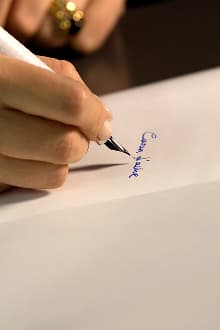Our colour and writing products are manufactured in our workshops in Geneva since 1915.
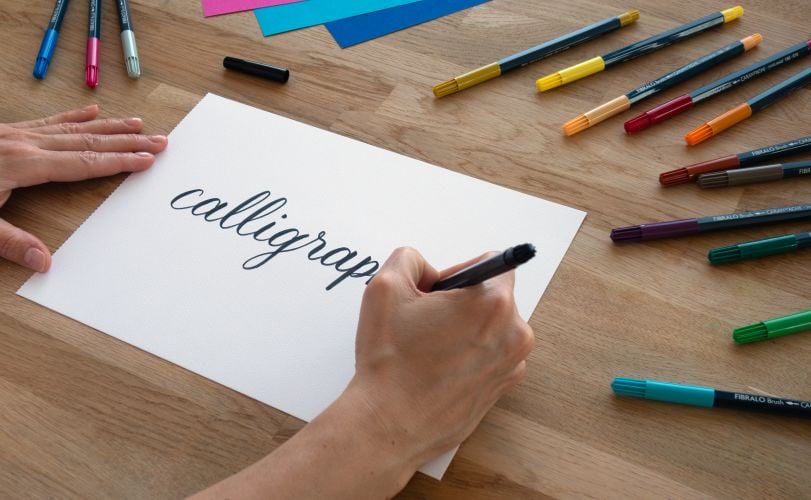
Calligraphy: tips for learning this modern art form
Now an ancient and time-honoured technique, calligraphy was one of the first methods of handwriting, enabling people to communicate with each other through hieroglyphs and eventually Eastern, Arabic and Western scripts. Today modern calligraphy, or lettering, serves a less practical purpose and has become more artistic.
Calligraphy is all about a passion for handwriting: shaping and styling letters, playing with colour. Have you ever wanted to try it? Learn how to draw sumptuous letters using the finest Swiss Made tools. Caran d'Ache accompanies you as you begin, through choosing the right paper, writing instrument and ink, to learning basic lettering techniques.
Calligraphy is all about a passion for handwriting: shaping and styling letters, playing with colour. Have you ever wanted to try it? Learn how to draw sumptuous letters using the finest Swiss Made tools. Caran d'Ache accompanies you as you begin, through choosing the right paper, writing instrument and ink, to learning basic lettering techniques.
LEARNING CALLIGRAPHY: HOW TO GET STARTED
Do you enjoy writing or drawing, and do you want to discover the pleasures of lettering? You don't need to be an experienced calligrapher already to draw beautiful letters. You can start learning now, just by equipping yourself with the right writing instruments and letting your imagination run free.
Use materials suited to your style
With over 100 years' experience in designing writing instruments, Caran d'Ache is your open door to creativity. When learning lettering, your best allies will be materials specifically adapted to calligraphy.
• Paper: Choose a high-quality paper such as the A4 mixed-media paper pad, which is ideal for both wet and dry techniques.
• Your first writing instrument : Before diving into forming large letters with a pen or brush, it's a good idea to start lettering with a more familiar instrument, such as the classic graphite pencil. Technalo, Grafwood or watercolour pencils are easy to manipulate and perfect for beginning calligraphers.
• Happy with your pencil lettering? Move on to either calligraphy with a fountain or felt-tip pen, or brush calligraphy. If you lean toward the finesse of a fountain pen, then don't underestimate the selection of inks you can choose from. Ultramarine blue, luscious red, shimmering orange: the Chromatics inkwell comes in twelve luminous shades. The fibre-tipped pens from the Fibralo® collection, are another popular option. You can also try your hand at using coloured pencils and watercolour brushes.
• Your first writing instrument : Before diving into forming large letters with a pen or brush, it's a good idea to start lettering with a more familiar instrument, such as the classic graphite pencil. Technalo, Grafwood or watercolour pencils are easy to manipulate and perfect for beginning calligraphers.
• Happy with your pencil lettering? Move on to either calligraphy with a fountain or felt-tip pen, or brush calligraphy. If you lean toward the finesse of a fountain pen, then don't underestimate the selection of inks you can choose from. Ultramarine blue, luscious red, shimmering orange: the Chromatics inkwell comes in twelve luminous shades. The fibre-tipped pens from the Fibralo® collection, are another popular option. You can also try your hand at using coloured pencils and watercolour brushes.
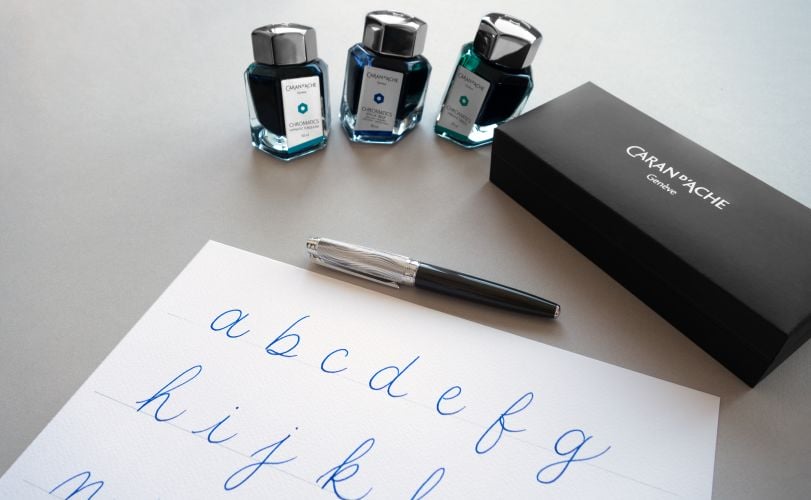
Glean inspiration from calligraphy artists
Now that you've chosen your materials, it's time to start tracing your first letters. At the start, practise just one character, or even several words or long sentences. Gain inspiration by tracing a template, using a tutorial or following Clémence Chollet's calligraphy video on YouTube. Practise one step at a time and learn at your own pace.
LETTERING: STEP BY STEP
Here are three practical tips to guide you as you learn calligraphy:
1. Use a ruler to keep your writing regular. Beginners frequently find it challenging to keep all their letters proportional so that nothing sticks out. To help with this, take a ruler and pencil and lightly sketch a grid that will mark the limits of your text. You will later erase it to reveal your superb calligraphic creation.
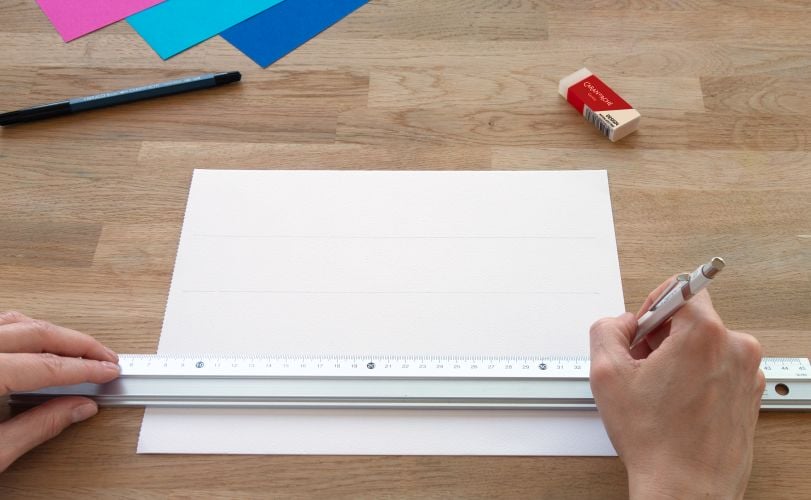
2. Practise by varying the height of your strokes, the pressure of your writing instrument on the paper, the shape of the instrument’s tip (broad, pointed, round, straight, chisel, etc.) and the amount of ink in your pen. Practise writing out the alphabet, in upper and lower case, until your penmanship is smooth and harmonious.
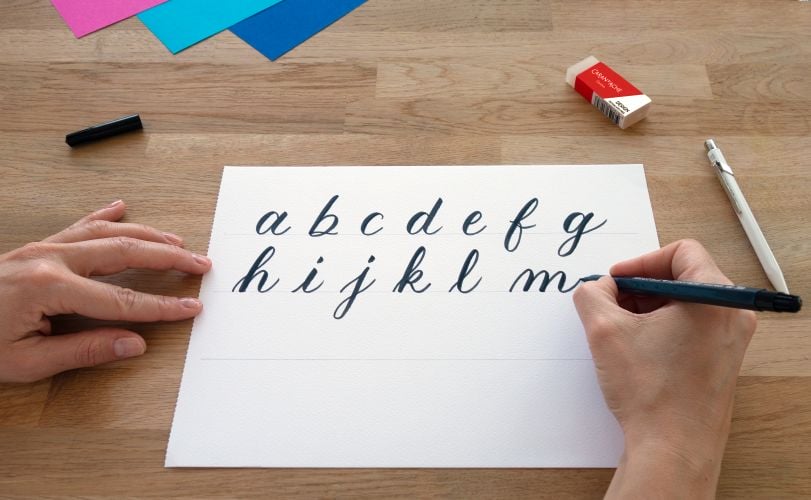
3. Test your instruments. Realizing your vision will depend not only on meticulous technique, but also on your writing media. Enjoy trying out fountain pens, brush pens, pencils, thin or thick brushes, and straight or chisel tips to discover which is the best for you. Oblique lines, thick lines, dots: each can become a meditation and a small joy.
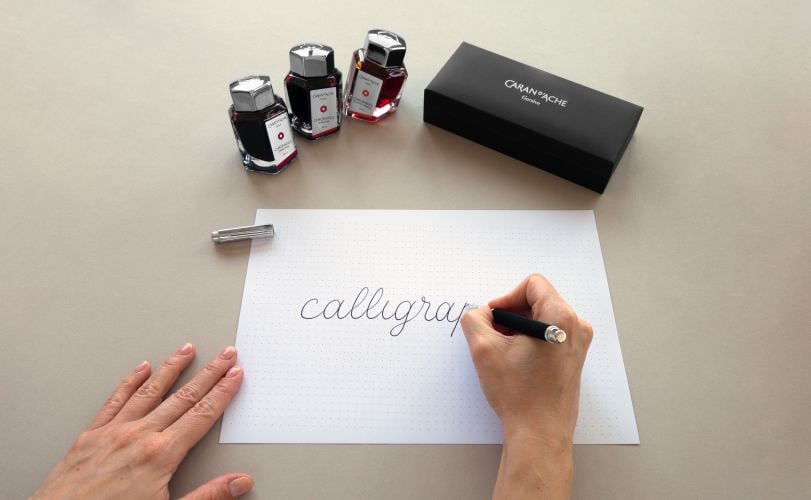
TAKE UP A PRACTICAL CALLIGRAPHY PROJECT
Embellish your diary, bullet journal, postcards… in short, move beyond exercises and start applying your skills to actual projects. In time, you'll become a real calligrapher.
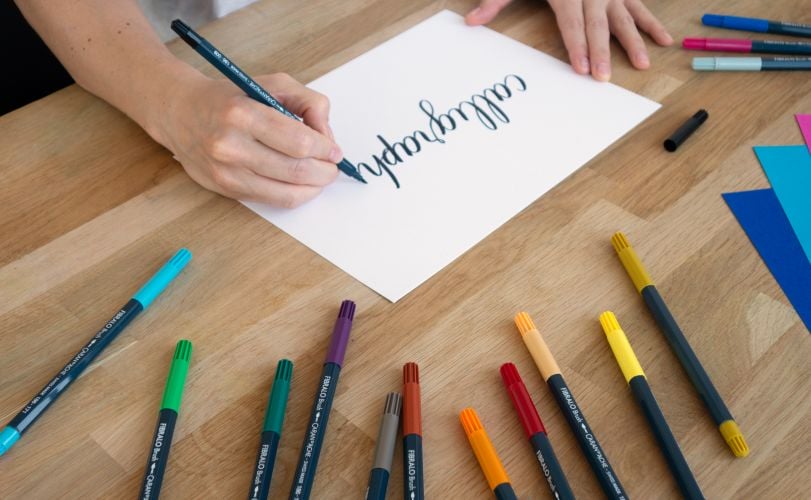
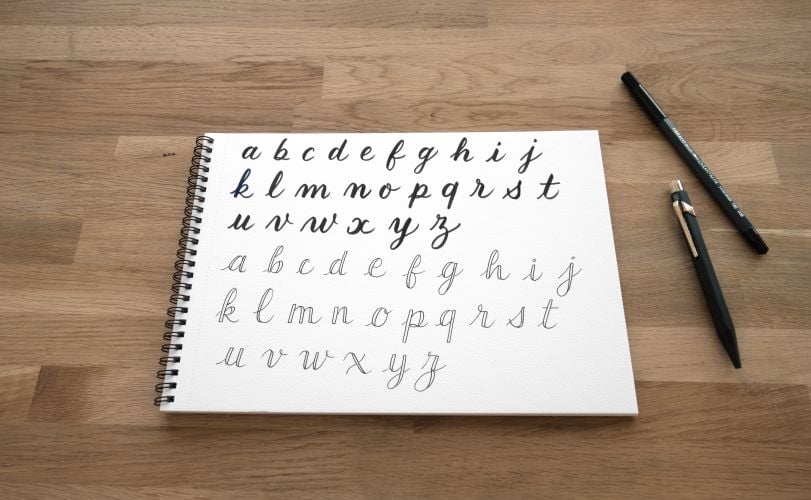
Do you already do watercolour? You can use a watercolour brush, pen or marker to create the stylish effect of brush lettering. Try the gradient brush method, which involves blends two colours by using a darker colour to soak the tip of a lighter-coloured felt-tip pen. Experiment with both thin and round lines. The three tip sizes (large, medium, and fibre-tipped) in our set of water reservoir brushes will allow you to explore different styles of brush lettering with ease.
You can also try the blending brush technique, using a brush without a water reservoir. First draw a letter in a light colour, and then apply touches of other colours in different places on the letter and gently blend. With its fine tip, the "petit gris" brush allows you to create dynamic washes, fine, precise lines and very long strokes, without having to return to the colour palette. It is ideal for the detail in brush calligraphy.
Try out the Caran d’Ache range of watercolour felt pens, graphite pencils, paintbrushes and fibre-tipped pens, all of which allow you to experiment with dynamic strokes. Our exceptional Swiss Made supplies will be there for you as you master the art of lettering.
You can also try the blending brush technique, using a brush without a water reservoir. First draw a letter in a light colour, and then apply touches of other colours in different places on the letter and gently blend. With its fine tip, the "petit gris" brush allows you to create dynamic washes, fine, precise lines and very long strokes, without having to return to the colour palette. It is ideal for the detail in brush calligraphy.
Try out the Caran d’Ache range of watercolour felt pens, graphite pencils, paintbrushes and fibre-tipped pens, all of which allow you to experiment with dynamic strokes. Our exceptional Swiss Made supplies will be there for you as you master the art of lettering.
Free from 199$ purchase.
Possible return under 14 days.
Possible return under 14 days.





 Japan
Japan
 Switzerland
Switzerland
